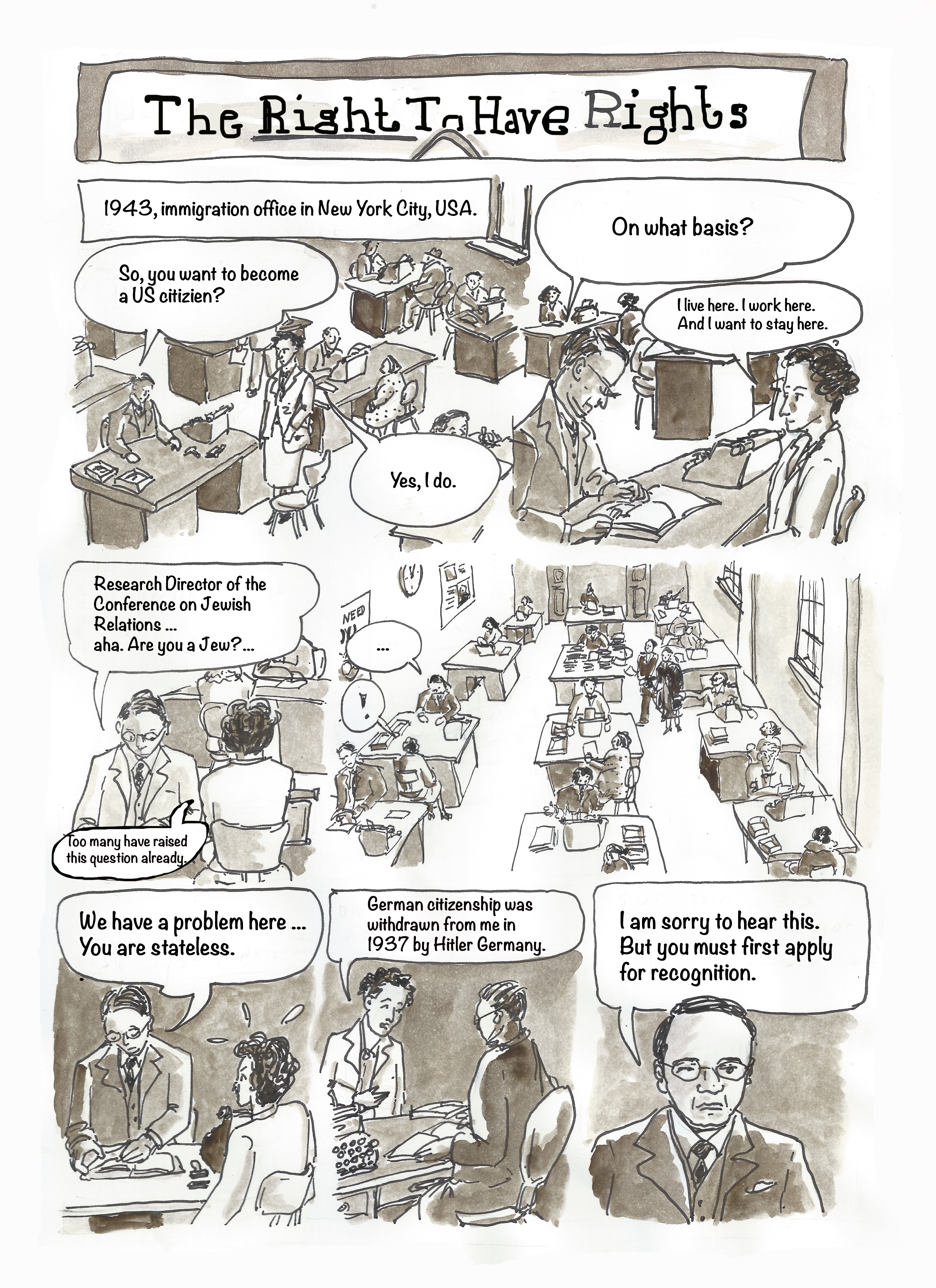Anna Faroqhi
THE RIGHT TO HAVE RIGHTS
An Episode from a Graphic Novel To Be
Episode Hannah Arendt
2017, colorprint on canvas
The graphic-novel miniature “The Right to Have Rights” shows an imagined episode in the philosopher Hannah Arendt’s life. Nazi Germany had taken away German citizenship from German Jews in the 1930s. Like many others, Hannah Arendt had become stateless. It took ten years and a successful career as a university professor, author and lecturer to finally grant her US-citizenship. The graphic novel episode refers to Arendt’s essay “We refugees” from 1943. Arendt criticizes modern nation-states and their political disinterest in the many refugees from Europe, especially the stateless, the Jews and proclaims a fundamental right to have rights.
In connection with the events in Syria and the growing refugee problems since 2015, I’ve re-read Anna Segher's "Transit" and came across Hannah Arendt's short essay "We Refugees". Surprisingly, it is two women who deliberately and lucidly deal with the situation of the most powerless. In 2016 and 17 my working partner Haim Peretz and I documented current escape stories in Berlin and Leipzig, and I decided to do a graphic novel about the refugees from Europe 70 years ago. Protagonists are three women who succeeded in reflecting on their personal experiences in their work; Helene Nathan, Anna Seghers and Hannah Arendt.
Helene Nathan was head of the public library in Berlin-Neukölln and a socialist.Because of this and her Jewish heritage she was forcibly dismissed in 1933.She had to face ostracism, the deprivation of her rights, and isolation.She took her own life on October 23, 1940, the day on which the deportation of Jewsfrom Berlin began. Helene Nathan only managed to escape into death.
Anna Seghers was a writer. She became well known in the 1920s, and was forced to emigrate first to France and in 1940 to Mexico. (The US denied her entry.) Seghers described with unprecedented precision and humor the turmoil of waiting for a departure opportunity in her novel »Transit«. She was a communist; after the war she returned to East Germany, the part of her old home country that seemed to promise her a new life.
Like Seghers Hannah Arendt emigrated in 1933, and escaped to the United States in 1941. There she became well known for her uncompromising and perceptive writings. Throughout her life, Arendt consciously kept her German-Jewish identity, but returned to Germany only as a visitor. She became an American citizen in 1951, ten years after her immigration.
For me, the making of a graphic novel is an old-fashioned, time consuming process. Other projects and everyday life have a tendency to come in the way. The three miniatures of which the presented episode is a part of, the concept and the protagonists are introduced.
I am currently working on the Helene Nathan episode for the graphic novel. A Berlin-based publishing house has showed an interest in publishing it. I am currently looking for financing.
Anna Faroqhi is a Berlin-based filmmaker and author of graphic novels. She teaches film for opera directors and musicians at Hanns Eisler University Berlin.


